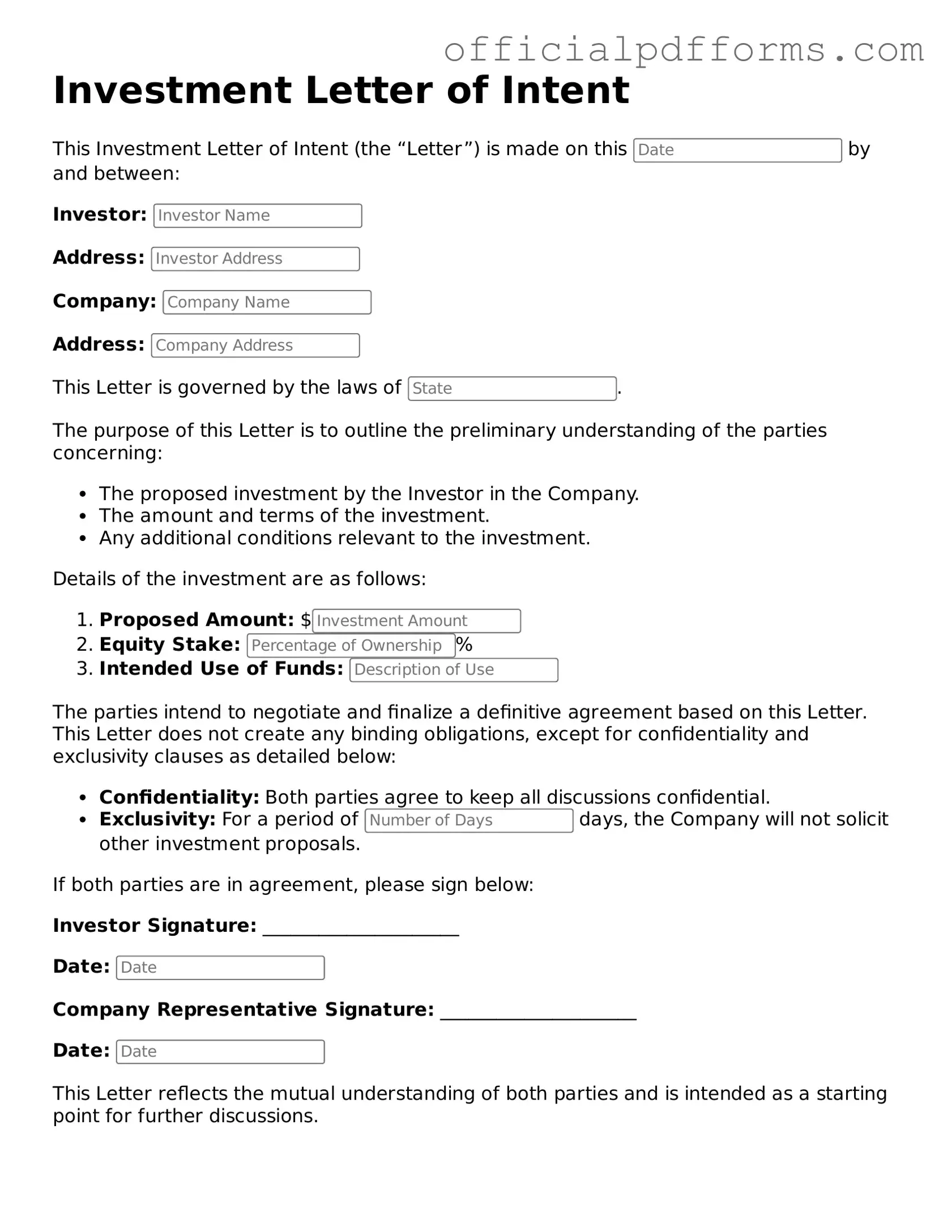Valid Investment Letter of Intent Document
An Investment Letter of Intent is a document that outlines the preliminary terms and conditions of a potential investment agreement between parties. This form serves as a formal expression of interest, indicating a willingness to negotiate and finalize an investment deal. For those looking to take the next step in their investment journey, filling out this form is essential; click the button below to get started.
Access Form Online
